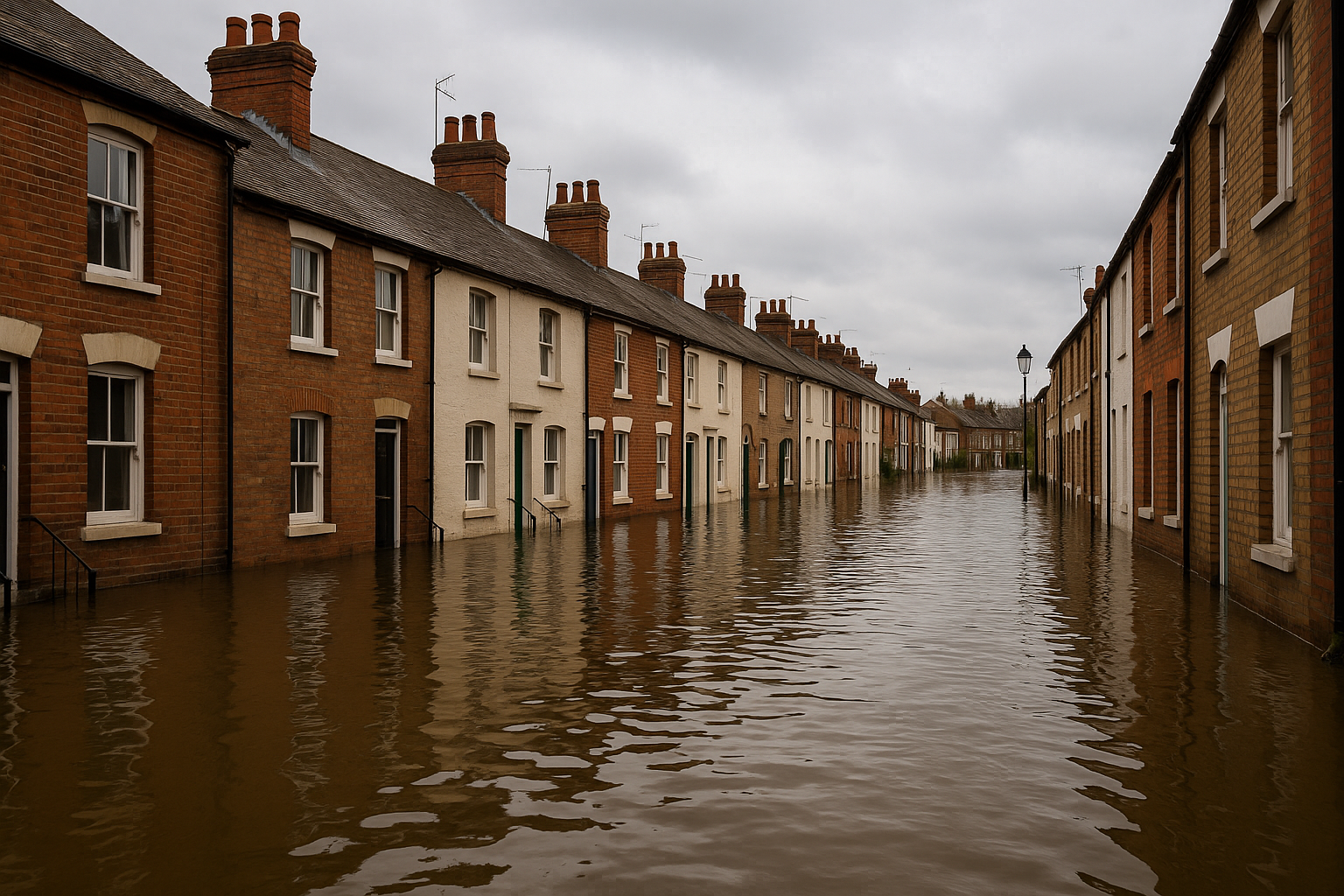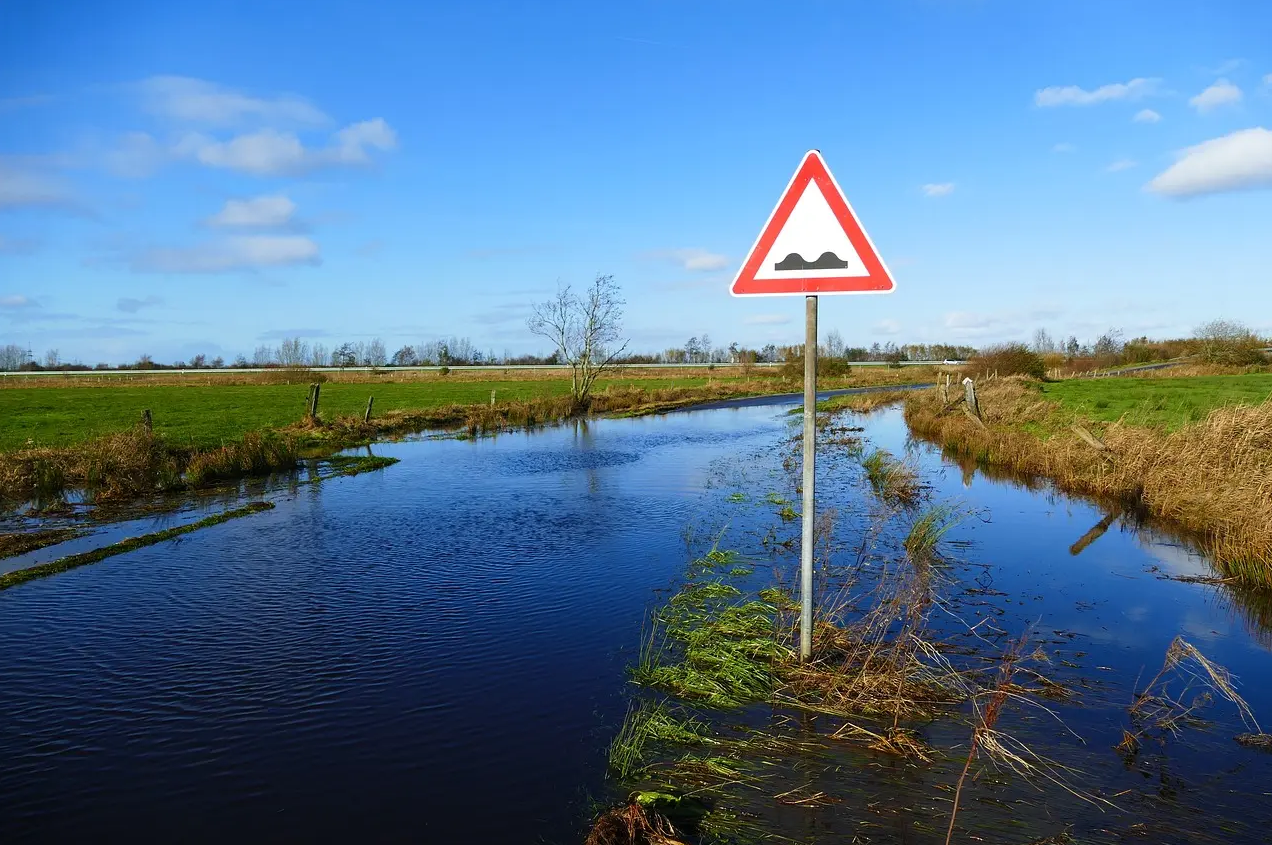


Types of Floods – Floods, one of nature’s most common yet devastating phenomena, pose significant risks across the globe, affecting everything from individual homes to entire communities. With climate change amplifying the frequency and intensity of these events, understanding the different types of floods is crucial for effective preparation and response.
This guide looks into the various flood categories, from the rapid devastation of flash floods to the slow rise of groundwater floods, outlining their unique causes, potential risks, and strategic measures for prevention. Whether you’re a homeowner or small business owner, this knowledge is essential for safeguarding your assets against floods’ unpredictable and often catastrophic nature.
Types of Floods Fast Facts:
Sewer flooding occurs when sewage escapes from drain covers or toilets due to the sewerage system overflowing.
The risk of flooding in the UK continues to increase year after year due to the effects of climate change. As a result, the number of flood insurance claims is increasing.
According to a report by CCRA, approximately 1.8 million homes in the UK are at significant risk of coastal, surface or river flooding.
What Oakleafe Clients Say:


To combat the adverse effects of flooding, several strategies can be employed:
To fully grasp the potential threats and necessary precautions, one must understand the science underpinning these natural disasters:
It is important to know what different flood zones mean, what flood zone your home is in, and how this could impact your home insurance.
The definition of flood zone 1 is an area that has less than 0.1% chance of flooding in a year.
This is shown on the flood zone map as clear and means that the area has less than a 1 in 1000 annual probability of suffering from river or sea flooding.
The definition of flood zone 2 is an area with a chance of between 0.1% and 1% flooding from rivers or between 0.1% and 0.5% flooding from the sea.
This area is shown in light blue on the flood zone map. If your home is in flood zone 2, you would be required to submit a flood risk assessment when developing your property to highlight the risks of flooding to the site.
Flood zone 3 is an area with a 1% or greater chance of flooding from rivers in a year or a 0.5% or greater chance of flooding from the sea in a year.
This area is shown in dark blue on the flood zone map. Land in zone 3 also requires a flood risk assessment for planning applications and will consist of reviewing the risk of flooding to the suite as well as possible options for flood mitigation.
Land in flood zone 3b is categorised as having a 5% or greater chance of flooding from rivers or the sea. To access the flood zone 3b map, click here.
Areas in this zone are often where water has to flow or be stored during a flood and are considered to be the most at-risk areas for flooding.
To find out if your home is at risk of flooding, you can use the Environment Agency’s flood risk checker by entering your address. From here, you will be able to find out the degree of long-term flood risk in any specific area in the UK.
The results of the flood risk summary show the risk levels of flooding from rivers, the sea, and surface water for the given address. On the page, you can also view a map that displays the levels of flood risk. While this gives good information on the possibilities of flooding, it is key to bear in mind that the flood map does not take into account climate change and the impact this may have on flooding in the future.
Surface flooding occurs following a period of heavy rain when water is unable to drain away. It is more likely in areas with harder surfaces like concrete, where the water levels will build up without any drainage. Basement flooding is a common problem in this scenario.
More people are at risk of surface flooding than any other form of flood risk, with over 3 million properties believed to be at risk in England alone. Surface flooding can happen anywhere – it does not need to be near rivers or the sea – and is harder to anticipate. It will also often have a bigger impact than other types of floods as it damages infrastructure and disrupts people’s lives.
Flood cover is usually part of any standard home insurance policy. In the event of a flood, whether this is from surface water, river water or seawater, your policy will protect you from any damage and losses incurred. It’s always worth checking the finer details in your policy wording to see exactly what’s covered in the event of a flood.
It can be harder to insure homes in high flood-risk areas as insurers will need to charge higher premiums to cover the risk involved. However, thanks to the Flood Re scheme, flood cover is now more widely available in high flood-risk zones, making it more affordable for households. The scheme works with insurers to reduce premium prices and provides recommendations to help reduce homeowners’ risk of flooding.

Anyone looking to protect their property from the potentially fateful effects of these natural disasters must grasp the types of floods and their respective countermeasures. Proactivity, education, and preparedness can make a substantial difference in mitigating the impacts. We encourage readers to share experiences and strategies that have proven effective in their flood-prevention efforts, fostering a community of resilience and support.
If your home suffers flood damage, your insurance company should cover the costs to restore it and replace any destroyed possessions. However, sometimes insurers may reject your insurance claim, leaving you to deal with the damage on your own.
Oakleafe Claims has represented policyholders and managed their water damage insurance claims since before the First World War. We have vast expertise and experience in both domestic and commercial flood insurance claims with thousands of satisfied policyholders who have received their deserved insurance settlement.
What Oakleafe Clients Say:



Please complete the form and one of our insurance claim professionals will call you back ASAP